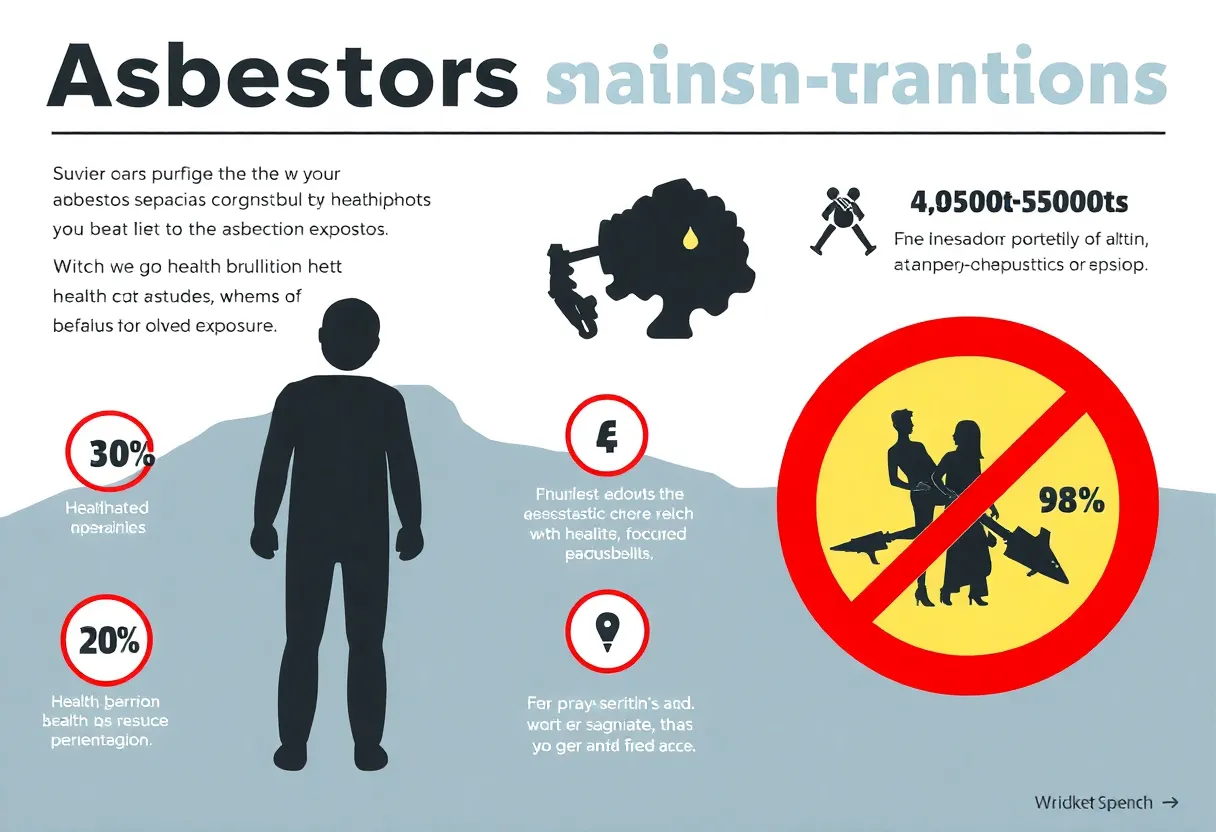News Summary
The EPA reconsiders the ban on chrysotile asbestos due to ongoing health risks linked to exposure, amid calls from industry representatives.
Potential Asbestos Ban Under Review as Health Risks Persist
The Environmental Protection Agency (EPA) is taking a close look at its recent decision to ban chrysotile asbestos, the last form of this lethal mineral still legally used in the United States. This reconsideration arrives in the wake of growing concerns over the health implications of asbestos exposure, which is linked annually to at least 40,000 deaths in the United States alone.
A Dangerous Mineral Resurfaces
As part of its ongoing commitment to public health, the EPA is evaluating whether the chrysotile ban, originally slated for 2024, exceeds necessary regulations. This process could result in significant amendments that will take approximately 30 months to finalize. Asbestos, a dangerous mineral renowned for its resistance to heat and corrosion, is categorized into six types: chrysotile, crocidolite, tremolite, amosite, anthophyllite, and actinolite. Despite its useful properties, all forms of asbestos are known human carcinogens, posing severe risks when fibers are disturbed and become airborne.
Health Hazards of Asbestos Exposure
The health ramifications of asbestos exposure cannot be overstated. Inhaling or ingesting these tiny fibers can lead to a range of serious diseases, including mesothelioma, which is particularly aggressive and has no known cure. Other cancers such as lung cancer, ovarian cancer, and laryngeal cancer, as well as non-cancer conditions like asbestosis and pleural disease, are also linked to asbestos. The alarming fact remains that there is no safe level of asbestos exposure, making it crucial for individuals, especially those working in high-risk environments like construction and automotive industries, to undergo regular health check-ups and vaccinations against flu and pneumonia.
The Role of Industry and Legislation
Aside from its dangers, asbestos has a long history of use in various products. It can be found in insulation, automotive parts like brake pads, and building materials such as roof and floor tiles. The past decades have seen a re-evaluation of its presence due to the health risks it poses and the challenges of safely managing it.
Recently, the Texas Chemistry Council urged the EPA to reconsider the chrysotile ban, illustrating the tug-of-war between public health concerns and industrial interests. This move follows a previous administration’s enactment of a significant new use rule, which allowed for new asbestos-containing products to be approved, raising alarms among health advocates.
Tackling Asbestos Violations in Detroit
As the debate intensifies over the regulatory framework for asbestos, states like Michigan are taking proactive measures. The Michigan Senate recently passed legislation aimed at enhancing safety during asbestos removal and monitoring. New regulations require background checks for asbestos abatement contractors and mandate the disclosure of any environmental violations. The Michigan Department of Environmental Quality (DEQ) has reported numerous instances of improper asbestos handling, particularly in the demolition of structures in Detroit, where the city has faced scrutiny over compliance with federal regulations.
The DEQ has taken action against the city, leading to consent orders and judgments for failures in oversight regarding asbestos. With the ongoing blight removal program in Detroit that has seen nearly 11,500 structures demolished, the need for strict enforcement of regulations around asbestos handling has never been more pressing.
Choosing to Protect Public Health
To mitigate the health risks associated with asbestos exposure, health professionals emphasize the importance of worker safety and community awareness. Regular medical check-ups and flu shots, alongside strict adherence to safety measures, are essential for workers and vulnerable populations living in areas where asbestos-laden materials exist.
As the EPA’s reconsideration process unfolds, it is clear that the consequences of asbestos exposure will continue to loom large. With public health at stake, communities and policymakers are urged to adopt more stringent regulations to protect lives and diminish the prevalence of asbestos-related diseases for future generations.
Deeper Dive: News & Info About This Topic
HERE Resources
EPA Seeks Pause in Asbestos Regulation Litigation Amid Industry Concerns
School District of Philadelphia Faces Federal Charges Over Asbestos Violations
Mounting Concerns Over Asbestos Use in America
Groundbreaking Criminal Charges Against Philadelphia School District Over Asbestos Mismanagement
EPA’s Daring Move: Reconsideration of Chrysotile Asbestos Ban Raises Alarms
The Hidden Dangers of Talc and Its Connection to Cancer Risks
Paradise Hills Pool Shuts Down for Mold and Asbestos Cleanup
South Carolina Supreme Court Delivers Major Blow to Atlas Turner in Asbestos Case
Paradise Hills Pool Set to Make a Splash Again After Closure
Shock Charges Filed Against Philadelphia School District Over Asbestos Hazards



















